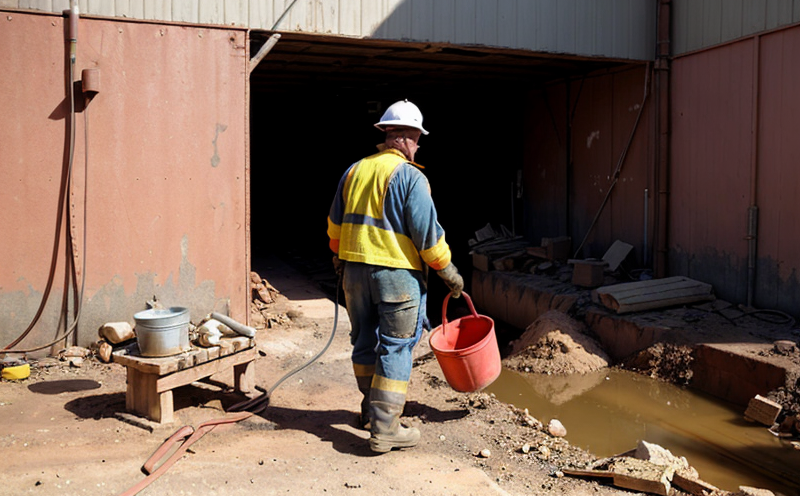EN 143 Respiratory Protective Devices Dust Filter Efficiency Testing
The EN 143 standard specifies requirements and methods for testing the dust filter efficiency of respiratory protective devices (RPDs). This ensures that workers in mining environments are adequately protected from inhaling harmful dust particles. The test is crucial in ensuring compliance with occupational health and safety standards, especially given the hazardous nature of the mining industry.
The standard covers both reusable filters and disposable ones used in half masks, full-face respirators, and powered air-purifying respirators (PAPRs). It emphasizes the importance of accurate testing to ensure that the filters perform as expected under real-world conditions. The test is conducted using a specific dust generation system designed to simulate industrial environments.
The procedure involves measuring the dust concentration before and after filtering through the test filter. By comparing these concentrations, the efficiency of the dust filter can be calculated. This value indicates how effective the filter is in trapping harmful particles. The higher the efficiency, the better the protection provided to workers.
| Standard Name | Year | Relevant Clauses |
|---|---|---|
| EN 143:2008 | 2008 | Clause 7: Test Method, Clause 9: Acceptance Criteria |
| ISO 9603-1:2015 | 2015 | Relevant for dust filter efficiency testing of RPDs in general |
The test setup typically includes a dust generator, a sample chamber, and an analytical balance. The dust generator produces particles within the relevant size range (typically 0.5 to 10 μm) that are similar to those found in mining environments. The samples are then drawn through the filter using a controlled airflow system.
The test procedure is conducted under specific conditions, such as temperature and humidity ranges typical of the mining environment. These parameters can vary depending on the location but generally align with ISO 9603-1:2015 for general RPDs. The efficiency of the filter must be tested at least once after initial installation to ensure it meets the required standards.
Compliance with EN 143 is essential for quality managers and compliance officers ensuring that they meet occupational health and safety regulations in mining operations. For R&D engineers, this test helps refine designs of more effective respiratory protective devices. Procurement teams can rely on these tests to select reliable suppliers who adhere to the highest standards.
The acceptance criteria for dust filter efficiency are strict, with the minimum efficiency requirement varying depending on the type and class of the respirator. For example, a Class 1 respirator must have at least 90% efficiency in filtering particles ranging from 0.5 to 10 μm.
Failure to meet these criteria can lead to serious health risks for workers, including respiratory diseases such as silicosis and pneumoconiosis. Ensuring that the filters pass this test is a critical step in maintaining a safe work environment.
Applied Standards
| Standard Name | Year | Relevant Clauses |
|---|---|---|
| EN 143:2008 | 2008 | Clause 7: Test Method, Clause 9: Acceptance Criteria |
| ISO 9603-1:2015 | 2015 | Relevant for dust filter efficiency testing of RPDs in general |
International Acceptance and Recognition
- The EN 143 standard is widely recognized across Europe, with many countries mandating its use for respirator safety.
- It is also referenced in other standards such as ISO 9603-1:2015, ensuring global applicability and acceptance.
- The methodology used aligns closely with international best practices, making it a reliable choice for testing dust filter efficiency globally.
Use Cases and Application Examples
In the mining sector, this test is critical for ensuring that respirators meet stringent safety requirements. For instance, in open-pit mines where silica dust is prevalent, using EN 143-compliant filters ensures that workers are adequately protected against lung diseases.
For R&D teams, this testing procedure provides valuable insights into the effectiveness of new filter designs and materials. By continuously improving these filters, they can enhance worker safety further while reducing exposure to harmful particles.





